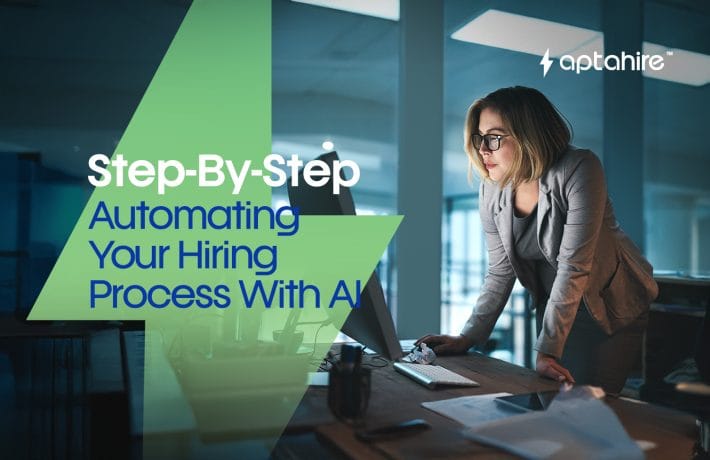How to Automate Hiring in 30 Minutes

Hiring is hard. Hiring without an HR team? Even harder.
But for many small and medium-sized businesses (SMBs), it’s the reality. Whether you’re a bootstrapped startup or a growing business with a lean team, not having a dedicated HR professional can make recruitment feel overwhelming.
Here’s the good news: You don’t need a big HR department to build a great team. With the right approach, tools, and mindset, you can attract and hire amazing talent, while staying focused on running your business.
In this blog, we’ll break down a practical, step-by-step roadmap on how SMBs can hire effectively without an HR team. Let’s dive in.
Step 1: Get Clear on What You Need
Before you even think about writing a job post, take a moment to define exactly what you’re looking for.
Ask Yourself:
- What is the business need this role will fulfill?
- Is this a full-time, part-time, or contract position?
- What skills and traits are must-haves? Which are nice-to-have?
- What does success look like for this role in the next 3-6 months?
Tip: Avoid generic job descriptions. Be specific about outcomes. For example, instead of saying “looking for a marketing manager,” say “seeking a marketer to double our email open rates and generate 100 inbound leads/month.”
Step 2: Create a Compelling Job Description
You might not have Google’s brand name, but you do have a story to tell.
What to Include:
- A brief about your business, vision, and values
- The role’s responsibilities
- What makes your team and culture unique
- Growth opportunities
- Perks (flexible hours, remote work, equity, learning budget)
Keep the tone human and conversational. Candidates want to know who they’ll be working with and why their work will matter.
Step 3: Use Smart, Affordable Hiring Channels
You don’t need to spend big bucks on job boards. There are plenty of free and budget-friendly platforms to promote your openings.
Where to Post:
- Your company’s careers page
- LinkedIn (use personal posts from founders/team too!)
- Twitter/X, Instagram, Facebook groups
- Local college/university career cells
- Startup communities, Slack/Discord groups, WhatsApp networks
- Internshala, AngelList, and niche job boards
Pro Tip: Ask your current employees or friends to refer candidates. Referrals often bring in the best fits.
Step 4: Set Up a Simple Hiring Workflow
Without an HR person to manage the process, structure is everything. You need a repeatable flow that saves time and ensures a great candidate experience.
A Basic DIY Hiring Process:
- Application form (Google Form or ATS like Freshteam)
- Shortlist resumes
- 15-20 min screening call
- Skills test or small paid assignment
- Final interview with founder or team lead
Use Tools to Help:
- Calendly for scheduling
- Google Sheets or Notion to track candidates
- AptaHire or Freshteam for simple applicant tracking
You don’t need fancy software, just tools that help you stay organized and consistent.
Step 5: Evaluate Beyond the Resume
Without HR, the responsibility of screening falls on you. Resumes are helpful, but they don’t tell the whole story.
What to Look For:
- Real-world skills (not just degrees)
- Relevant project or startup experience
- Cultural fit and alignment with your values
- Curiosity, adaptability, and hunger to learn
Use skills-based tasks to assess how they think and solve problems. A small, paid assignment often gives you more insight than a polished resume.
Step 6: Run Candidate-Friendly Interviews
Interviews should be structured but conversational. You’re not a giant corporation with 5 rounds and an HR panel, and that’s a good thing.
Keep It Simple:
- Be transparent about the role, pay, and expectations
- Ask open-ended questions (“Tell me about a time you…””)
- Give space for the candidate to ask you questions
- Be honest about challenges, it builds trust
And remember: you’re selling your company too. Share your journey, mission, team vibe, and future plans.
Step 7: Make Fast, Fair Offers
When you find the right person, act quickly. Small businesses lose out on top talent by waiting too long.
What You Can Offer:
- Competitive salary (as per your budget)
- Flexible work arrangements
- Performance bonuses or ESOPs
- Learning and growth opportunities
A clear, well-written offer letter and a warm onboarding message go a long way in creating a great first impression.
Step 8: Onboard With Intention
Hiring doesn’t end at offer acceptance. Onboarding is crucial, especially without HR.
DIY Onboarding Checklist:
- Send a welcome email with tools, documents, and their Day 1 plan
- Assign a buddy or mentor from your team
- Set 30-60-90 day goals
- Schedule regular check-ins
- Celebrate small wins and give early feedback
A thoughtful onboarding builds loyalty, reduces early attrition, and sets the tone for success.
Bonus: Automate Where You Can
There are plenty of free or affordable tools to automate routine hiring tasks:
- Zapier: Automate form submissions to spreadsheets
- ChatGPT: Help draft job descriptions or interview questions
- Loom: Record welcome videos or assignment instructions
- Typeform: Create engaging application forms
Automation saves time and makes your process feel more professional.
Final Thoughts: You Don’t Need HR to Hire Smart
The truth is, most great SMBs are built by founders who wear many hats. Hiring without an HR team may seem intimidating, but it’s completely doable, with the right mindset and systems.
The secret? Be intentional. Be human. Be structured.
When you treat candidates with respect, communicate clearly, and focus on mission-fit over just qualifications, you’ll attract people who believe in your vision.
And that’s what every growing business needs.
So roll up your sleeves. Build your team. You got this.
FAQs
1. Why should businesses, no matter how small, have someone dedicated to the HR function?
Even in small teams, HR plays a vital role in managing people, setting company culture, staying compliant with laws, and helping the business scale responsibly. Having someone, even part-time, focused on HR ensures smoother hiring, onboarding, employee engagement, and performance management.
2. What happens if you don’t have HR?
Without HR, businesses risk mismanaging hiring, violating labor laws, ignoring employee grievances, and creating a toxic or disorganized work environment. This often leads to high turnover, poor productivity, and potential legal trouble.
3. What is the role of HR in a small business?
In small businesses, HR handles everything from recruiting and onboarding to payroll, compliance, training, and employee relations. They also help shape culture and keep the team aligned with company goals.
4. What risks could occur to organizations if they have no HR function?
- Legal non-compliance (labor laws, contracts, taxes)
- Poor hiring decisions
- Low employee morale or engagement
- Higher attrition rates
- Lack of structure in handling conflicts or evaluations
5. How to manage HR in a small business?
Start small. Use digital tools like ATS, payroll software, and templates to handle basic HR tasks. Assign HR responsibilities to a capable team member until you can hire a full-time HR. Outsource functions like compliance or payroll if needed.
6. Why is an HR department necessary for an organization?
HR ensures that the company attracts, retains, and develops the right talent. It builds a healthy workplace, handles legal compliance, and keeps policies consistent, all essential for sustainable growth.
7. What are the 7 main functions of HR?
- Recruitment and hiring
- Employee onboarding and training
- Performance management
- Compensation and benefits
- Employee relations
- Legal compliance
- Workplace culture and engagement
8. Why is HRM important in SMEs?
HRM helps SMEs scale without chaos. It provides structure, ensures fair practices, keeps employees motivated, and reduces legal or operational risks, giving founders the freedom to focus on business growth.



